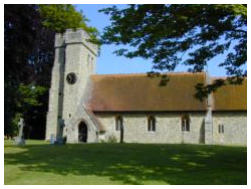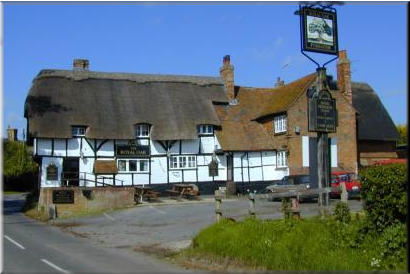


Until 2003 Aston Abbotts was proud to boast two public houses. The Bull and
Butcher was located centrally within the village and for much of the 20th
century it also served as the village bakery. This pub closed in March 2003,
following the granting of planning permission to convert the site for
residential purposes. Unfortunately for the residents of Aston Abbotts, some
of whom are a thirsty bunch, the Royal Oak in the Wingrave Road, which
goes south out of the village, closed during the pandemic in 2021. This
thatched pub dates back to the 17th century, although it is believed that it
was originally built to house workers and converted to a pub later. There is
no sign of the pub openingas of 2024.
Aston Abbotts lost it’s last remaining shop in 2005 when its proprietor
Bernard Osborn retired. Osborn's shop had been located at one end of a
thatched cottage and until closure it provided a valuable service to older
residents who found it less easy to travel to Aylesbury or the other villages
to pick up essential supplies. Bernard Osborn was born in Aston Abbotts
before the Second World War and you can read an interview with him here,
where he discusses his village life and running the shop.



Local industry has also diversified over the years - perhaps in some
surprising directions. Just on the northern edge of the village on the
road to Cublington lays a small industrial estate, home to a number of
businesses. Farm buildings on the Wingrave Road leading him from
south now house an antique furniture and furniture restoration
business. Flackwell Electronics and Aviation Headsets electronics
repair business is located at Church Farm. But perhaps the most
unusual industry is the alpaca farming business run by Abbotts View
Alpacas. (If you don't know what alpacas are then you should check
out their website.) Abbotts View Cattery is located on the same site.
There are three livery stables in Aston Abbotts.
But still the farming roots are strong. Much of the surrounding land is
farmland and a few of the older farming families remain. Although
some of the land is arable there is a great deal of pasture land. Much
of this is used for sheep, although horses and cattle are also present
in significant numbers.


Aston Abbotts residents face a number of threats to their peaceful
happy existence. Of these probably the most significant is the threat
of over development. Some controlled development is not only
inevitable but arguably desirable if the village is to grow and move
forward as times change. However, house prices in Buckinghamshire
have soared to astronomical levels in the last two decades and this,
coupled with the relatively low value of land for farming and a
general shortage of housing, creates financial pressure for
development. Although the Aylesbury Vale Local Plan does not allow
for large development in the villages, recent years have seen the
granting of several planning applications. In the year from April 2003
to April 2004 residential developments at the site of the former Bull
and Butcher public house and on land to the rear of Home Farm saw
a further 14 dwellings created, representing a housing growth of
over eight per cent just in a 12 month period.
A second potential threat is posed by the plans to develop an Oxford
to Cambridge expressway. One route option would have created a
larger and busier bypass road passing just south of, but possibly
closer to, the village. At present the chosen route is further north in
Buckinghamshire, but there is still a risk that this decision may
change .
Luton Airport (some 15 miles away) started to route approaching
aircraft over the Bucks villages around 2005. This increased the air
traffic overhead on days when the wind is in an Easterly direction. At
present the flightpath is used just for aircraft starting their final
descent and they pass overhead at 3000-5000 feet (1000 - 1500
metres).
Although the last century has shown that change and development is
not only inevitable but sometimes brings good things, many villagers
are concerned that the pace and scale of change should not destroy
their way of life.
Bernard Osborn (centre - in the shop doorway) on April 2nd 2005 - the day that
he finally closed the shop doors
The Royal Oak
So What’s So Special? Where Are We? Today & Housing Facilities, Industry, Threats The Village Walk Footpaths & Bridleways Field Map


- Photos
- Aston Abbotts - Winter Pictures
- Aston Abbotts How It Was
- Villagers Pictures - General
- Villagers Pictures - Ken Rhodie
- 630 Club Bean Competition 2011
- Astonbury X 2011 - Page 1
- Astonbury X 2011 - Page 2
- Astonbury X 2011 - Page 3
- Vic Scott Memorial Orchard
- Christmas Lunch 2011
- Peter Kent's Photographs
- Jubilee Picnic 2012
- Village Orchard - One Year On
- Village Orchard - Autum 2012 Planting
- Astonbury 2012
- Videos
- Interviews











